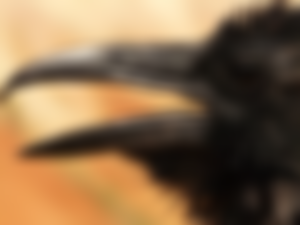A comparison of Birds and Their Ancestral Dinosaurs
This is the second article about the relationship between birds and dinosaurs. The first one was Archaeopteryx, Birds & Dinosaurs.
All birds (avians) are dinosaurs, but all dinosaurs were not birds. So what is the difference between birds and other (non-avian) dinosaurs?
Feathers & Flight
Feathers existed long before birds, probably even before the dinosaurs, since even crocodiles carry the gene which builds feathers in birds. I will not go further into that discussion here, just stating the fact. It is likely that all Archosaurs (see diagram below) had the feather gene. However, we must be clear over that feathers are not always of the sort we see on birds, which is a highly evolved and complex structure. The first feathers most probably were filamentous feathers. Filamentous means “threadlike” and filamentous feathers are more hairlike, although they are definitely not hair. Yet, filamentous feathers are not what most people spontaneously would recognise as feathers.
When we say that all Archosaurs probably had the feather gene, it is not certain that all of them had feathers; the genetic basis for feathers might have been suppressed in some or even many species. It is also certain that all who really had feathers, did not have pennaceous feathers, the highly complex and evolved type that is necessary for flapping flight. So far, they are known only from birds and a few Theropod dinosaurs.
The original purpose of feathers could have been insulation, protection of eggs during brooding, or social or sexual display. There is no doubt that feathers serve all these functions for modern birds.
As everyone knows, feathers are also used for flapping flight, although that requires highly developed pennaceous feathers, and flying were most certainly not why feathers were evolved in the first place.
How flying developed is a matter of speculation and dispute. Most likely, small feathered animals first climbed up on something, then jumping and gliding away in the air. Or perhaps flapping with feathered wings were first a help in running faster; then flying by moving wings came step by step. Today feathers and flying with the help of wings covered with pennaceous feathers are characteristics of birds, but it is very possible that already some small Theropod dinosaurs developed that ability. Not necessarily direct ancestors of birds, it can have happened on later extinct side-lines.
Flying itself is not dependent on feathers. Pterosauria, for instance, was an order of dinosaur-like animals (although they were not dinosaurs). Pterosaurs came in many sizes, and they were the first vertebrates to develop flight. They had no feathers. With their membrane-like wings, they dominated the airspace about 228-66 million years ago.
And there are others. A contemporary example of featherless flying vertebrates are bats.
Breathing & Bones - Pneumatisation of the Post-Cranial Skeletal Structure
Birds have a superb system for breathing and absorption of oxygen, very superior to ours. Flying is hard work, they need much oxygen. We, with our system for extraction of oxygen from air would never have the strength for flapping flight; we would not be able to keep up the supply of oxygen to the relevant muscles. We would also be too heavy, because we have compact bones. The bones of birds are not compact; they contain cavities, which are part of their breathing system. They have pneumatic bones
In addition to lungs, birds have air sacs penetrating the skeleton, in a system that moves the air in just one direction. What reaches the lungs is always fresh air. Everything in the system is working in one direction. Not as in mammals, including humans, where it flows in two directions, which means that every time the lungs get new air, there comes also some old air. For a mammal, the concentration of oxygen becomes lower.
The structure in the lungs is also different from mammals. Mammal lungs have alveoli and handle both ventilation and exchange of gases (between lungs and blood) in the same places, while, in birds, ventilation and exchange of gases are separated.
Theropod dinosaurs had a pulmonary system similar to the system of the birds, including the presence of air sacs penetrating the skeleton. And so had Pterosaurs, discussed above as featherless flyers 228-66 million years ago.
The skeletal air “pockets” make the animal lighter than if it had compact bone. For birds, this is a precondition for flight, but obviously, this was not why it first evolved. The Theropod dinosaurs did not fly, and many of them were huge in size. Just imagine Tyrannosaurus Rex! Certainly, it did not fly. However, it went upright, it was bipedal, and even that is a feat for an animal of that size. (Being bipedal is also a characteristic birds share with their Theropod ancestors.) It is quite possible that bipedalism couldn't have developed if the skeleton had been compact - at least not in animals over a certain limited size.
Although there are several similarities and both had pneumatic bones, the skeletal anatomy of birds is not identical to that of their Theropod ancestors. Aves (birds) have evolved further and become adapted to flight and its special anatomical requirements. Details about that is beyond the scope of this article, but it can be fun to know that the wishbone, something often said to be typical only for birds, have been found also in some of their Theropod ancestors.
Teeth & Beak
Theropod dinosaurs had teeth, birds have not. This, however, is no dramatic difference. Birds have the genes to teeth and sometimes it is said that there were early birds with teeth. That is, indeed, a matter of how one defines Aves. The present view is that Aves, birds, have no teeth and have never had teeth. They were lost in an immediate ancestor of Aves.

Birds also developed the beak, which come in myriad shapes and sizes, often highly specialised for the need of just that species of bird.
Gizzard
Birds have nature's most efficient digestive system, and the basis for that is the use of a gizzard. Amongst contemporary animals having a gizzard, we find crocodiles and alligators, and it is likely that all Archosaurs had it. That includes dinosaurs.
A gizzard is a muscular digestive organ working by grinding food. Birds have stones in it to aid the grinding. When the stones become too smooth and round, they become useless and are replaced with new ones. The old ones are then regurgitated. Similar stones have been found in connection with dinosaur fossils, indicating that at least some dinosaurs had a gizzard, and, just like birds, used ingested stones as help with the grinding.
(Some other animals also have a gizzard. For instance, earthworms, crustaceans, and some fish.)
Vision & Colours
Birds are sometimes vividly coloured. Colour plays a role in sexual selection and social interaction. They have good colour vision and some birds can perceive ultraviolet.
Their vision is highly developed in other ways as well. Far beyond the vision of any other vertebrate, although it varies between different species of birds.
Dinosaurs, at least the Theropods, obviously had superb vision and colour vision as well. Tyrannosaurus Rex, a Theropod, might have had the best vision of any land-living animal ever. (For more on the eyes and vision of Tyrannosaurus Rex, see The Most Powerful Eyes)
If Tyrannosaurus Rex had feathers, as observations suggest, they cannot have been there for insulation or flight, the animal was quite simply too large. They must have been for sexual selection and social display. Then, they most probably were coloured.
Childhood and speed of growth
Traditional reptiles grow their whole life. They get bigger the older they are. So do crocodiles. Dinosaurs, however, did not, neither do birds.
Birds grow up extremely fast. They reach full size in just a few weeks!
One can say that dinosaurs were somewhere between reptiles and birds. First they grew relatively slowly and then there was a period of exponential growth, before they were full-grown. After that they didn't live all that long – nothing like the long life of reptiles.
Sexual maturity reflects how they grow. Dinosaurs most likely were breeding at time before they were full-grown. (Naturally, traditional reptiles are breeding before they are full-grown, since they are never full-grown.) Birds are not doing that. They grow up so absurdly fast that all energy must go to growing. They cannot waste energy on breeding during that time.
One has to wonder why birds have developed this speed of growth.
Young birds lead a dangerous life. Predators lurk everywhere and a young bird is helpless, apart from the protection the parents can offer – and that protection is often quite limited. They must grow quickly and learn to fly quickly.
Appendix: Archosauria
Here we can see how, according to the present level of knowledge, crocodiles (belonging to Crocodylomorpha) are related to dinosaurs and, in the extension, to birds (which would be a branch of Saurischia). Some member of Archosauria was the last common ancestor.

Crocodiles and birds are, as far as we know today, the only branches of this tree that are not extinct. Also, since both birds and crocodiles have the gene building feathers (although suppressed in today's crocodiles, they are not feathered), it is probable that feathers were already developed by Archosaurs before the lines were divided.
Read also part one of this article, Archaeopteryx, Birds & Dinosaurs.
Related Articles:
To Revive an Extinct Dinosaur - Is it at all Possible?
How Can We Know Anything About Dinosaurs?
In my INDEX, you can find all my writings on Read.Cash, sorted by topic.
Copyright © 2019, 2022 Meleonymica/Mictorrani. All Rights Reserved.
(Photo by LoggaWiggler/Pixabay. CC0/Public Domain.)
Here you can find my articles about Palaeontology.
If you are interested in Evolution & Paleontology, a topic including Dinosaurs, join my community "Natural Science (1c4e)".
My 5 most recent articles:
Archaeopteryx, Birds & Dinosaurs
How to Avoid Mental Decline: Neuroprotectors
Before Western and Modern Medicine & Surgery II: The Great Physicians


I enjoyed reading your post. As always.